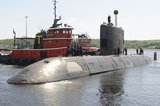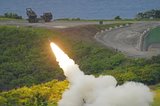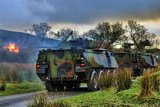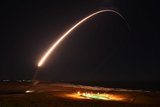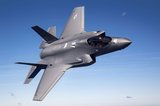Sea Air Space 2011: Service chiefs outline future visions
US Marine Corps (USMC) assistant commandant Gen Joseph Dunford has demanded his service goes on 'weight control' as the force looks to the future.
Speaking to delegates at the Navy League Sea Air Space exposition in Washington DC, Dunford described how current USMC equipment was too heavy. 'Weight will be an independent variable in all the equipment that we purchase in the future, from individual equipment to our vehicles', he announced.
'In order to be expeditionary and capable of getting there and light enough to move, we need help in expeditionary energy. We cannot be the nation's expeditionary force of choice with the kind of footprint that we have right now,' he asserted.
Dunford also described how future procurements would be required to satisfy a hat-trick of requirements, comprising value for money and energy efficiency as well as the aforementioned weight constraints. 'Those three questions are increasingly important to us,' he added.
More specifically, he emphasised how the USMC's replacement of the AAV-7A1 Amphibious Assault Vehicle with the Amphibious Combat Vehicle remained 'our number one ground priority in modernising the ground tactical vehicle portfolio'. Dunford continued to describe how the USMC was committed to replacing the capability lost in the cancelled Expeditionary Fighting Vehicle programme. 'We are optimistic that we are going to get to where we need to be,' he said.
Elsewhere, he described how the USMC was also committed to Lockheed Martin's F-35B Joint Strike Fighter and its STOVL capability, and stated: 'Look at the employment of Harriers over the past 12 months- it's not hard to make a case for why we need 22 “big decks” that are capable of carrying a fifth generation aircraft into the fight. Certainly, we have seen that done to great effect in Afghanistan and in support of special operations forces and most recently in Libya.
'Although [F-35B] been described as being on probation, we are maintaining a presumption of success with the programme,' he urged.
Meanwhile, USN Adm Jonathan Greenert, vice chief of naval operations referred to 'changing and challenging times' and described how the service was 'advancing our capability to meet the most likely threats'.
'The Littoral Combat Ship, P-8 and ballistic missile defence are pretty much on track. We have
accelerated our commitment to the new aircraft, the E2-D, and stabilised Seahawk helicopter and Growler programmes. [Growler] performed in combat in two theatres and did particularly well in libya campaign,' he said.
'Beyond these platforms, we are looking at EW, information dominance, ASW improvements and integrated air missile defence. Our ISR platforms, going beyond FireScout to Fire X to UCAS-D to UCLASS, will move us into the next generation for unmanned surveillance and strike,' he continued while also referring to research and development into the navy's 'new generation jammer'.
More from Defence Notes
-
![How might European countries look to tackle drone incursions?]()
How might European countries look to tackle drone incursions?
Disruption of infrastructure in Europe, whether by cyberattack, physical damage to pipelines or uncrewed aerial vehicles flying over major airports, as has happened more recently, is on the rise. What is the most effective way of countering the aerial aspect of this not-so-open warfare?
-
![Taiwan approved for $11 billion weapon purchase from US]()
Taiwan approved for $11 billion weapon purchase from US
The US State Department’s approval of a multi-billion-dollar sale of weapons to Taiwan includes tactical mission networks equipment, uncrewed aerial systems, artillery rocket systems and self-propelled howitzers as well as anti-tank guided missiles.
-
![Ireland spells out $2.3 billion shopping list in five-year defence spending plan]()
Ireland spells out $2.3 billion shopping list in five-year defence spending plan
Ireland’s multi-annual investment in capital defence spending is set to rise from €300m in 2026 to €360m in 2029–2030 with major upgrades across land, air, maritime and cyber domains.
-
![Canada to deepen integration of multi-domain capabilities to strengthen its defences]()
Canada to deepen integration of multi-domain capabilities to strengthen its defences
The Canadian Department of National Defence has created new organisations to manage the procurement and integration of all-domain solutions and allocated US$258.33 million to strengthen production capacities.
-
![US National Security Strategy prioritises advanced military capabilities and national industry]()
US National Security Strategy prioritises advanced military capabilities and national industry
The 2025 NSS has emphasised investment in the US nuclear and air defence inventory and national industry, but it leaves multiple unanswered questions on how the White House will implement this approach.
-
![Canada set to look away from its neighbour and across the Atlantic for partners]()
Canada set to look away from its neighbour and across the Atlantic for partners
While non-EU UK struggles to join the Security Action for Europe initiative, which provides loans for defence programmes, Canada has become the first country outside Europe to get access – and did so for a nominal fee.









